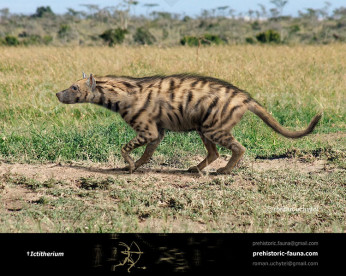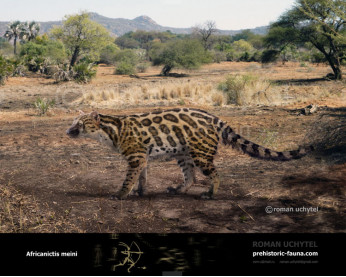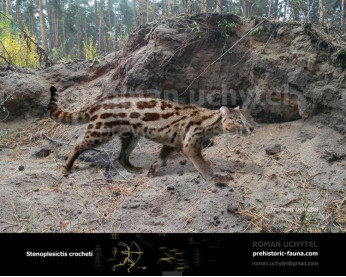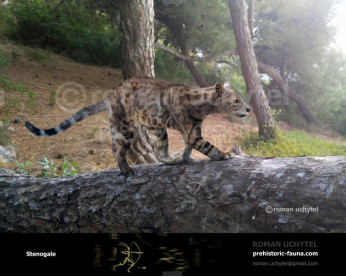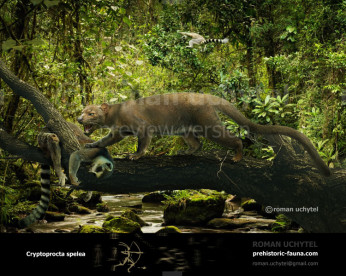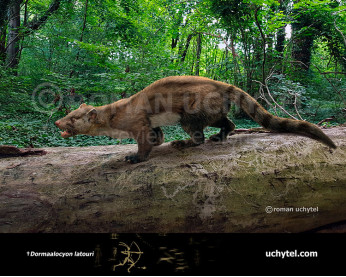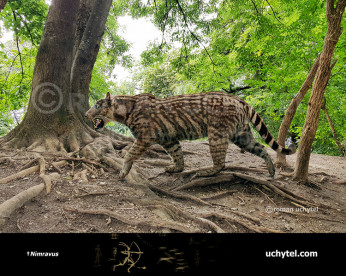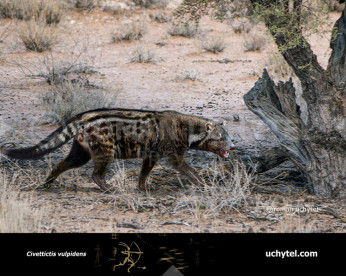Giant civet
563563
The giant civet (†Viverra leakeyi (Leakey, 1982))
Synonyms: Civettictis leakeyi
Order: Carnivore
Suborder: Feliformia
Family: Viverridae
Size: 1,8 m in length, 59 cm in height, 40 kg of weight.
Time period: lived in Africa in the Late Miocene to Pleistocene
Viverra leakeyi or the giant civet, was the extinct largest species of the Viverra genus of civets. Its fossils have been found in Africa, from Langebaanweg, Ethiopia, Tanzania, and the Omo Valley.
Being the largest viverrid currently known to ever exist, it grew to about the size of a small leopard, around 40 kilograms and 59 centimetres high at the shoulder. V. leakeyi looked physically similar to living Asiatic civet species but is thought to be more closely related to the African Civettictis civetta due to their location.
Viverra leakeyi so far the only species identified as living in Africa, with the other living species of Viverra (V. civettina, V. megaspila, V. tangalunga and V. zibetha) being known only from across Asia. When still alive V. leakeyi would have been much larger than these other species, with dentition that suggests a greater preference towards eating meat (living civets have been observed eating some fruits as well as meat). The late Miocene saw many larger versions of animals we know today and in Kenya Viverra leakeyi may have shared its habitat with the large mustelid Ekorus.
Payment
You may use multiple payment methods to buy image such as credit cards, PayPal and bank transfer.
The giant civet (†Viverra leakeyi (Leakey, 1982))
Synonyms: Civettictis leakeyi
Order: Carnivore
Suborder: Feliformia
Family: Viverridae
Size: 1,8 m in length, 59 cm in height, 40 kg of weight.
Time period: lived in Africa in the Late Miocene to Pleistocene
Viverra leakeyi or the giant civet, was the extinct largest species of the Viverra genus of civets. Its fossils have been found in Africa, from Langebaanweg, Ethiopia, Tanzania, and the Omo Valley.
Being the largest viverrid currently known to ever exist, it grew to about the size of a small leopard, around 40 kilograms and 59 centimetres high at the shoulder. V. leakeyi looked physically similar to living Asiatic civet species but is thought to be more closely related to the African Civettictis civetta due to their location.
Viverra leakeyi so far the only species identified as living in Africa, with the other living species of Viverra (V. civettina, V. megaspila, V. tangalunga and V. zibetha) being known only from across Asia. When still alive V. leakeyi would have been much larger than these other species, with dentition that suggests a greater preference towards eating meat (living civets have been observed eating some fruits as well as meat). The late Miocene saw many larger versions of animals we know today and in Kenya Viverra leakeyi may have shared its habitat with the large mustelid Ekorus.

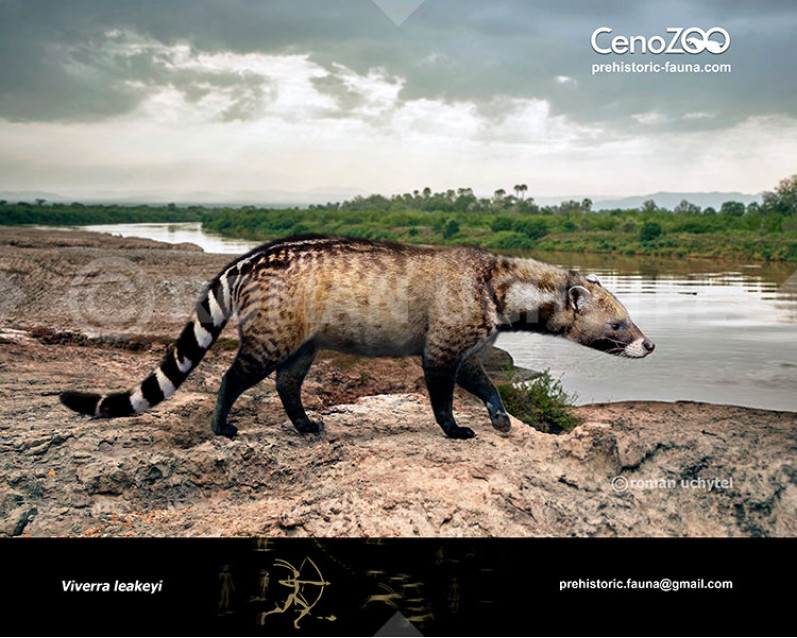
-797x638.jpg)
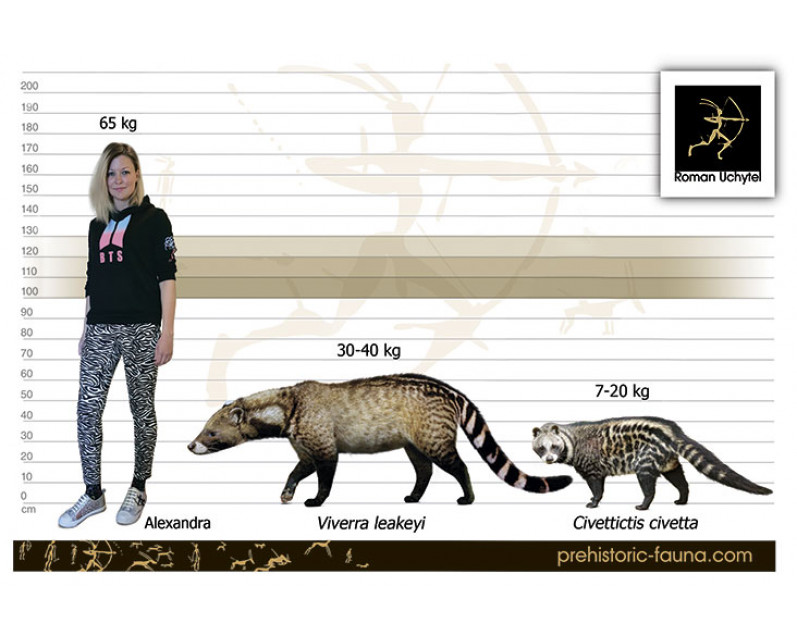

-70x56.jpg)

